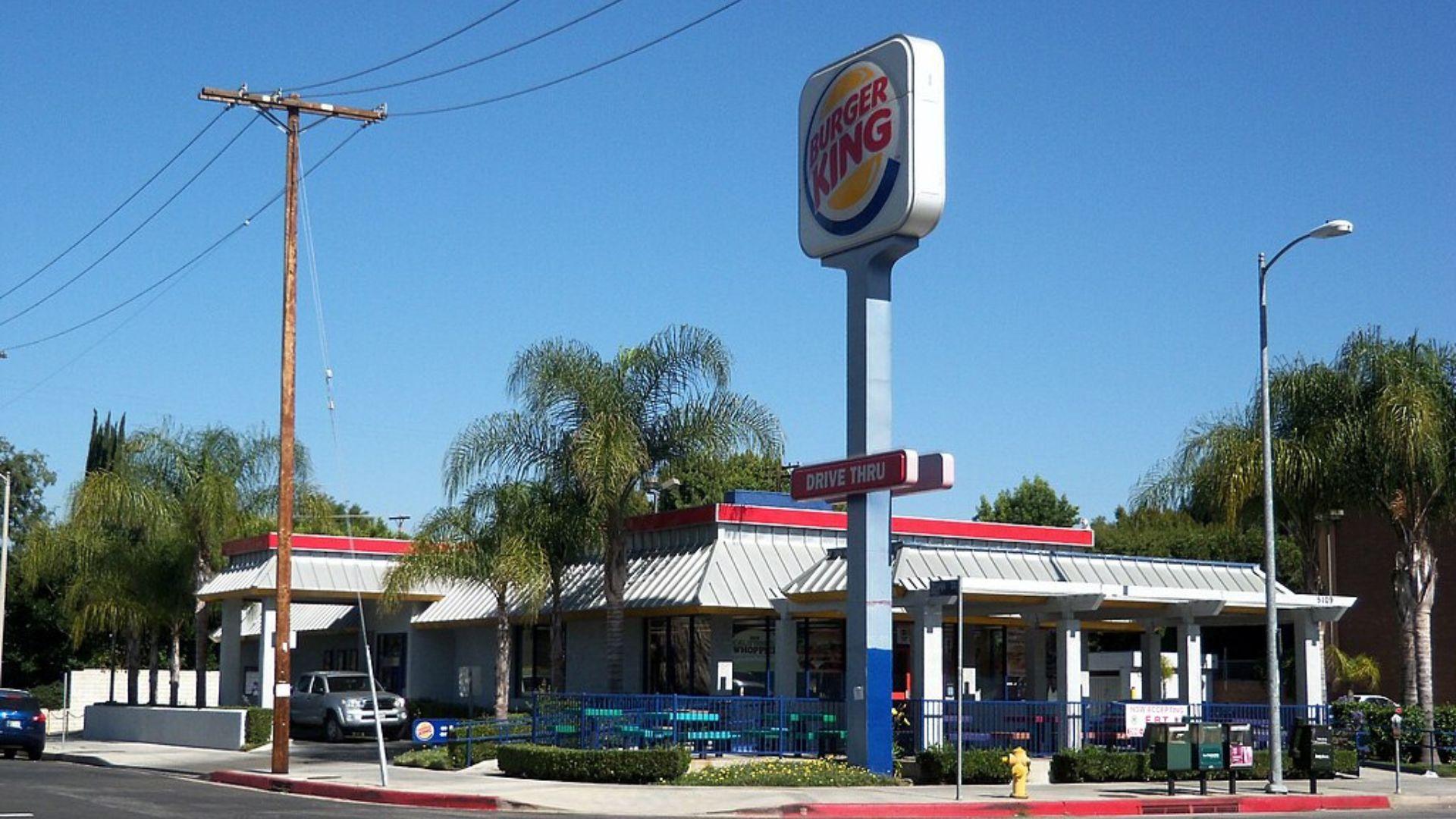Many fast-food and healthcare workers in California now make a minimum of $20 an hour after a new wage increase went into effect on April 1st, signed into law by Governor Gavin Newsom last year.
Now, one month into the wage bump, other workers want a taste of the pay increase too, feeling they also deserve more money.
Prices Rising

California workers are watching wage increases for their peers in other industries while they are stuck at a lower tier, paying for the same inflated prices on goods as everyone else.
The minimum wage in California is $16 an hour for most workers, a full $4 less than what those working in certain industries like fast food are able to make.
California Inflation

This division in minimum wage creates a sore spot for some in the midst of soaring prices of consumer goods in California.
A California Legislative Analyst’s Office analysis from March found that prices have grown about 20% in the state since 2020. Inflation levels in California are higher than the average rate in the rest of the country.
Fast Food Price Increase

While raising the minimum wage sounds like a good way to empower workers, the increased wage has to come from somewhere.
According to the San Diego Union-Tribune, California’s fast-food prices rose 7% just before the new $20 minimum wage took place and California full-service restaurants have raised prices by 3.3% in the past six months.
Other Workers Want In

Stephon Harris works at a grocery making $16.35 an hour and told the Los Angeles Times he wants in on the wage increase too.
“I would like to make that,” Harris said of the $20 minimum wage. “Sixteen dollars an hour is definitely not enough if you’re trying to support a family.”
Workers Deserving Wages

As workers look at the privileged wages of other workers, many are asking why they don’t deserve the same pay as well.
“Clearly the Legislature understands that some workers deserve $20, so they must understand that everybody deserves $20,” said Saru Jayaraman, president of One Fair Wage, a national organization calling for higher salaries in the service sector.
Labor Reshuffle

The increased wage for fast food workers is tempting many in other industries who are paid the less to leave their jobs to go work in fast food or healthcare.
Child-care providers, school staff, retail workers, and restaurant workers bring in some of the lowest wages in California, and there may be an exodus to $ 20-an-hour jobs that could increase staffing shortages in other industries.
Can’t Afford to Live on Lower Wages

As high levels of inflation and economic woes left over from the pandemic loom large over people’s heads, a once radical idea of continually raising the minimum wage seems attractive to many.
“There’s no way around raising wages at this moment. People are just saying, ‘I cannot afford to do this anymore,’” Jayaraman said. “If you see every other price go up and the wages have not, you’re going to end up with massive staffing crises in every low-wage sector.”
Ballot Measure

During the general election in November, Californians will be able to vote on an $ 18-an-hour minimum wage proposal.
If it receives enough yes votes, it will increase the state minimum wage to $18 for all employees by 2026 and will increase the minimum wage annually based on any increase to the cost of living.
Increasing Cost of Living

Although these high minimum wage numbers may be shocking to people in the rest of the country, the cost of living in California is extremely high.
The current minimum wage in California equals about $33,000 per year, but the cost of living in the state comes out to about $53,082 every year according to federal data.
Increased Calls From Unions

Unions are playing a big part in pushing for more wage increases for the workers in the industries they advocate for.
Last week, unions in San Diego representing hotel workers introduced a campaign to fight for $25 an hour.
No End in Sight

It seems that despite campaigns pushing for specific numbers, there is no number that will put an end to worker wage demands. This has some expressing skepticism about the viability of continually forcing wages higher in the future.
“We can’t expect the business community to continue to absorb this time and time again,” said Republican Assemblymember Heath Flora. Flora has heard resentment from constituents that they were excluded from the $20 wage hikes because they “don’t have a powerful labor group or lobbyist” backing them up.
Sector-Specific Impacts

As California introduces higher minimum wages, various sectors are forced to adapt, reshaping their operational strategies. The technology, agriculture, and manufacturing sectors each face unique challenges and opportunities.
This adaptation is crucial for maintaining competitiveness and profitability in a state known for its diverse economy.
Impact on the Technology Sector

In the technology sector, companies are increasingly turning to automation as a response to rising labor costs. The integration of AI and robotics is not just a trend but a necessity to maintain efficiency and manage expenses.
The shift is particularly evident in Silicon Valley, where tech giants are leading the way in adopting these advanced technologies, setting a precedent that could spread across other industries.
Impact on the Agriculture Sector

California’s agriculture sector, heavily reliant on manual labor, faces significant challenges with the wage increase. Farmers are exploring automated solutions like robotic harvesters and drone monitoring systems to reduce dependence on human labor.
These changes are critical in maintaining the delicate balance between productivity and cost, ensuring that California remains a leading agricultural state.
Impact on the Manufacturing Sector

The manufacturing sector in California is seeing a reshuffle as companies evaluate the cost benefits of automation versus offshoring.
With increased wages, there’s a growing inclination towards using automated assembly lines to cut costs and improve precision. This evolution in manufacturing techniques could redefine the sector’s role in California’s economy.
Consumer Behavior

Rising wages in California are expected to alter consumer behavior significantly. With more disposable income, consumers might increase spending, yet simultaneously, they may face higher prices across various services and goods.
The potential shift in consumer behavior could impact businesses’ pricing strategies, supply and demand dynamics, and overall economic stability.
Increased Disposable Income

With the recent wage increase, Californians are experiencing higher disposable income, which could lead to enhanced spending on both necessities and luxuries. Retail sectors are anticipating a surge in sales, particularly in electronics and fashion.
This increase is a welcome change for businesses but also poses questions about long-term consumer spending sustainability.
Price Sensitivity and Spending Cuts

Despite higher wages, Californians are becoming increasingly sensitive to prices, particularly in essential goods such as groceries and housing.
This sensitivity is prompting a more cautious approach to spending, with many opting for budget brands or discount options.
Educational Opportunities

The rise in minimum wage is influencing Californians’ educational and career choices.
More individuals are considering vocational training and higher education paths that align with industries offering higher wages.
Rise in Vocational Training

Vocational training programs are seeing a spike in enrollment as more Californians pursue careers in high-wage industries.
Technical schools offering courses in healthcare, technology, and skilled trades are particularly popular, reflecting the job market’s demands. This trend shows a shift towards practical, employment-oriented education.
Shifts in Higher Education

Higher education in California is adjusting to the new economic reality. There’s a notable increase in enrollment for STEM fields and healthcare, driven by the promise of higher starting wages.
Universities and colleges are adapting their curricula to meet this demand, focusing on degrees that offer a clear path to financial stability.
Future of California’s Economy

As wage increases ripple through California’s economy, it’s crucial to consider the long-term implications.
While higher wages can provide immediate relief for low-income workers, there is concern that businesses may struggle to keep up with rising labor costs. There’s also the risk of wage inflation, where prices increase to match higher wages, leading to a cycle of continuous increases.
Economic Forecasts and Scenarios

Economic experts are forecasting mixed outcomes for California’s economy following the wage increases. Some predict robust growth driven by higher consumer spending and economic activity, while others caution about potential job losses due to automation and business closures.
This complex scenario presents a critical moment for policy-makers and business leaders as they navigate these uncertain waters.
